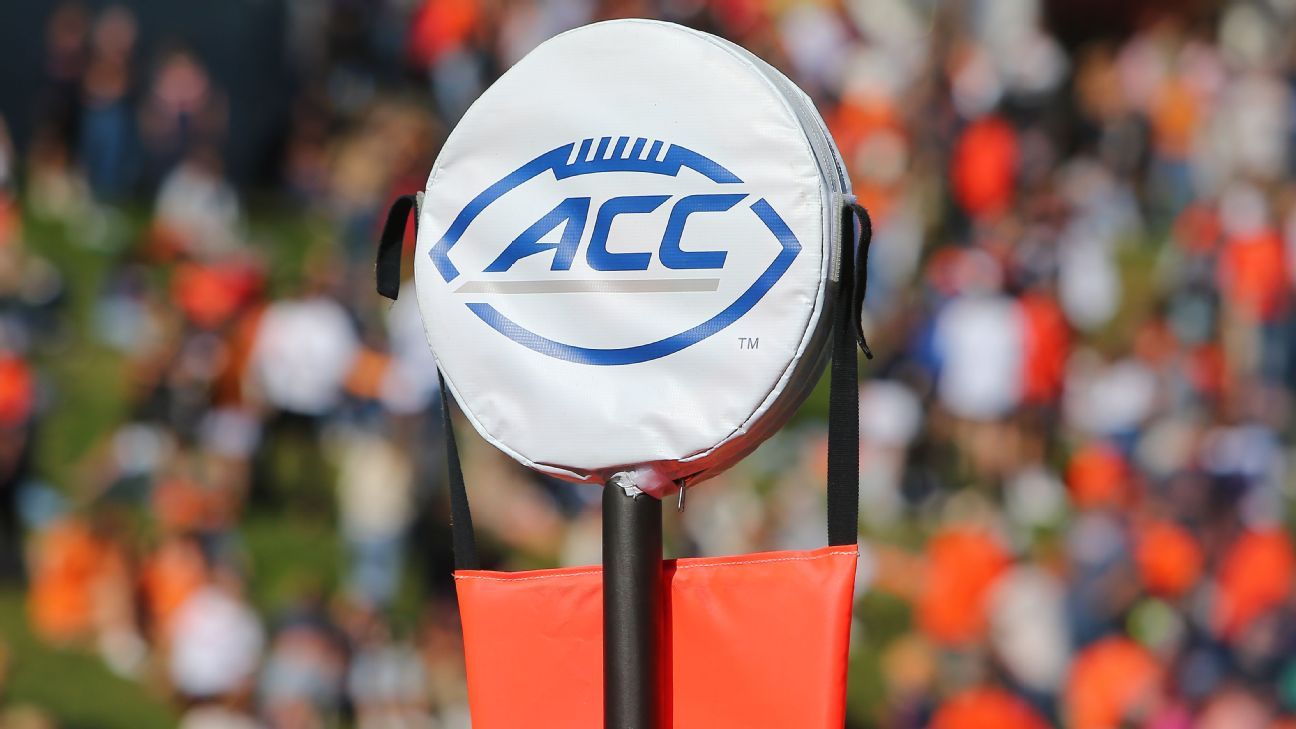AMELIA ISLAND, Fla. — Amid increasing uproar over the league’s future, the ACC appears to be nearing a new agreement on revenue distribution that could offer some budget relief for top programs.
The league’s athletic directors left a second day of occasionally contentious meetings feeling optimistic that schools would coalesce around a plan that would afford a larger share of postseason revenue — including from a soon-to-expand College Football Playoff — to the teams participating in those postseason games rather than dividing it equally among all members.
While there are a number of models still on the table for what league officials are calling “success initiatives,” Florida State athletic director Michael Alford said there are scenarios in which a team making the College Football Playoff could add more than $10 million in revenue annually.
That financial bump could help assuage concerns that Alford raised to his own board of trustees in February, when he said the revenue gap with the SEC could present an existential crisis for Florida State that would potentially force the school to look for a way out of their grant of rights agreement.
“The ADs and the universities are very unified,” Alford said. “So we’re thrilled about being in this league, and we want to stay in it.”
The ACC’s annual spring meetings began Monday amid reports that seven schools had lawyers examine the league’s grant of rights, which allocates each team’s broadcast rights to the league through the year 2036, and had discussed potential exit strategies.
Those reports were met with intense frustration inside the AD’s meeting room, with multiple members admitting to raised voices and a few profanities exchanged that Miami’s Dan Radakovich chalked up as “an airing of grievances.”
“People had to say where they were and why do you feel that way,” Radakovich said.
In the end, however, those frustrations helped to clarify the serious concerns that Alford, Radakovich and others have over the league’s future, given a massive revenue gap with the Big Ten and SEC that projects to be as much as $40 million annually in the coming years.
Alford said Tuesday’s discussions were “as open and transparent” as he’d experienced, and he believed the progress could mollify the larger revenue concerns for the foreseeable future.
The discussion of potential departures was “probably overblown,” Alford said, with a number of other athletic directors, including at schools rumored to be among those looking for an exit, saying the reports were not substantive.
“Everyone has taken a look at the grant of rights,” one athletic director said. “You’d be crazy not to. But no one is going anywhere.”
To exit the ACC, a school would need to pay an exit fee of three times their annual revenue (approximately $120 million) and would risk losing the right to broadcast their games due to the grant of rights. It’s a possibility schools have discussed, Radakovich said, but not one anyone is eager to undertake.
“The ADs and the universities are very unified. So we’re thrilled about being in this league, and we want to stay in it.”
Florida State athletic director Michael Alford
“Trying to keep things the same isn’t going to work,” he said, “but moving away is expensive and difficult. Sure, they could pay the $120 million and litigate the other piece. But where does that put them? Where does it put anybody? It’s hard. We don’t have an answer yet. So I think it’s better to all get into a room and talk about it.”
The ACC has yet to report its 2021-22 revenue distribution, but several ADs said they expected about $43 million per team. When the Big Ten’s new $7 billion TV deal begins in July, teams are likely to receive in excess of $70 million annually. The SEC’s distribution would similarly outpace the ACC’s.
“We have this gap, and the gap is just not about the money,” Radakovich said. “It’s about schools being able to take those dollars and translate it into potentially NIL opportunities for student athletes. So forget about the fact that you might go and steal a coach if you have more money. Now it’s going to get better players. That’s where the rubber hits the road.”
The new revenue distribution models would not impact TV revenue, which makes up about 75% of the ACC’s distribution — something Alford said he hopes the league will return to discussing in the near future. He has suggested that Florida State’s brand value for television far outpaces most other ACC schools and that the league should consider giving a bigger slice of that revenue to the top brands. Under the models being discussed this week, Alford said, no school would be in position to earn less in 2023-24 than it did in 2022-23.
Alford said he doesn’t believe the new success initiatives would completely remedy the revenue issues faced by the league, but it would allow top programs like Florida State to remain competitive for national championships.
“We just need to be in a competitive boat,” Alford said. “We’re the third-best media agreement right now. We want to stay the third best. We need to be able to compete. As long as we’re there and competitive, that’s what the number is.”



